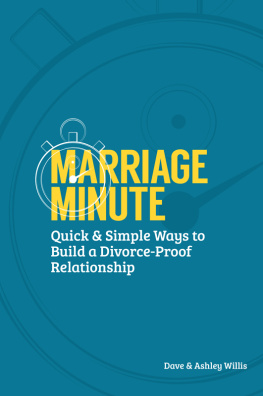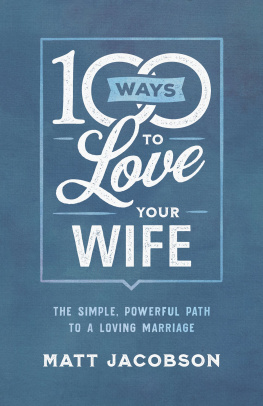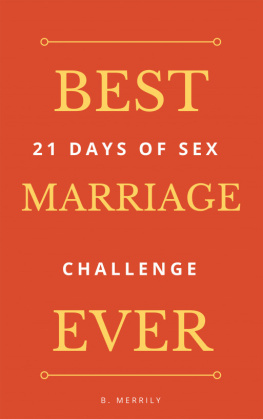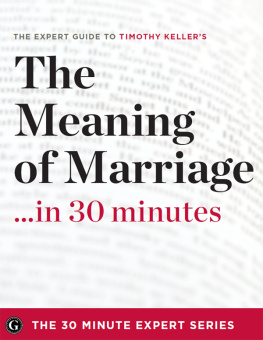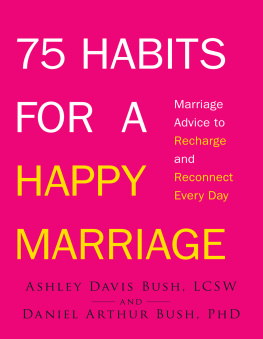Acknowledgments
Although I take full responsibility for the concepts, the discussion of scientific research, and the evocation of clinical practice, all of the books that I write are a communal endeavor.
To begin, I would like to thank my first reader, Arie Shapira. When I met him over two decades ago, it was, according to him, love at first sight. But when I told him my profession, he said, You sell air. Twenty-four years later he now calls himself a junior psychologist. And, in fact, he is good. I know if I read a section to him and he doesn't yawn profusely the chapter is engaging. He is my canary in the coalmine of human potential.
Then there is Alexia Paul. She is a charming, smart, professional, organized, literary mentor. It is so much fun teaching Alexia what I know, as she is inquisitive, open-minded, and so with it. Her reliability makes any task doable.
I would also like to gratefully acknowledge Paula Munier. She believed in my work and provided an enthusiasm for my doing this project that inspired me.
Stphanie Abou is a literary agent who is both modern and old school. She is sharp, professional, funny, enthusiastic, strict, and completely dedicated to her writers. How lucky I am to have met her!
To my mentor and teacher, Dr. Louis Ormont, who functioned as a group therapist until he passed away last year at the ripe age of ninety. He was the most original thinker of group therapy and psychodynamic human behavior that I have ever encountered. I learned to be a penetrating clinician as a result of watching him perform his magic.
I also want to acknowledge my sister and master therapist, Suzanne Stutman, for her smart contributions to Chapter 4 and Chapter 8.
Thank you to Gina Shedid, my graduate student, and research assistant, in the Department of Applied Psychology at New York University where I am an adjunct professor. Coming from Egypt, she displays the calming, wise demeanor of these ancient people.
Finally, I extend my sincere recognition to the multitude of clients who have shared their lives with me. For good therapy to work, there has to be love passing from me to them and them to me. My clients have offered me the opportunity to love them, and I do.
Save Your Marriage in Five Minutes a Day has improved my personal life, as well as sharpened my clinical and academic skills. So thank you, Adams Media, for another chance at working with such a fine publisher.
Dr. Bonnie Jacobson
Introduction
When I decided to write Save Your Marriage in Five Minutes a Day, I knew I wanted to write a book that would work as a shot in the arm, a marriage vaccination to be used for cure or prevention, depending on whether a union is floundering or flourishing. (And of course, there are times when everyone's relationship is in one state or the other.) In recent times many couples have, for a multitude of reasons, decided to plough through the rough patches and have been spending time learning how to navigate into smoother emotional waters. After all, when you think about it, five minutes a day devoted to transforming a tense environment into a joyful one is a small price to pay. Consider this: Five minutes a day to prevent family disconnect is less time than it takes to brush your teeth twice a day or take a shower.
Over a century ago, Sigmund Freud taught us that the unresolved conflicts in our families of origin are worked out in our marriages, which is when one typically focuses on getting past personal blindness. So if you leave marriage number one, feeling, for example, that you want to be free of your husband's criticalness, or your wife's chaos, you will inevitably find the same dynamics in marriage number two. However, if you are able to manage the stress you experience in marriage one, and learn how to respond to your partner rather than react to him, you'll then be free to move forward past your own childhood roadblocks. With practice, you'll come to accept that we all have our quirks, and you'll be able to alter how you experience the other person's inevitable behavior. Hopefully, this idea provides a high level of motivation to work on your present marriage so you're not forced to live a life similar to Bill Murray's in Groundhog Day where each day he wakes up to the same problem until he changes himself.
Interestingly, numerous clients of mine report that they experience many marriages within their primary partnership. For them, marriage one may be glorious, two a strain, three a disaster, four supportive, and five peaceful. There is so much more to learn by staying and working through a dark period and coming out the other side. Couples who spend their lives together take pride in their tenacity and enjoy the comfort of a deep, deep love. So whether you stay for the long haul or divorce and try again you'll inevitably have many marriages within one lifetime.
Finally, here is my offer of which I encourage you to take advantage. Once you have read and enacted the ideas in this book, let me know how well you do. I am always available for consultation you can reach me through my website, www.drbonniejacobson.com. In addition, I urge you to participate in an Internet self-help book club. You will find the link on my website. Through these book clubs you can encounter a community in which you can brainstorm your own ideas for saving your marriage in five minutes a day. For example, your husband leaves his socks on the dining room table, which you find outrageous. To deal with the situation, you can link into your Internet community of marriage savers and brainstorm a way to respond to this annoyance that builds harmony in your relationship and keeps your partner from seeing you as a nag.
In writing this book, I have begun the practice of devoting five minutes a day to adding joy to my own home environment. Happily, these daily injections are working for me and they'll work for you too! Remember: You cannot depend on anyone else to make you happy. So enjoy the journey based on your own initiative.



